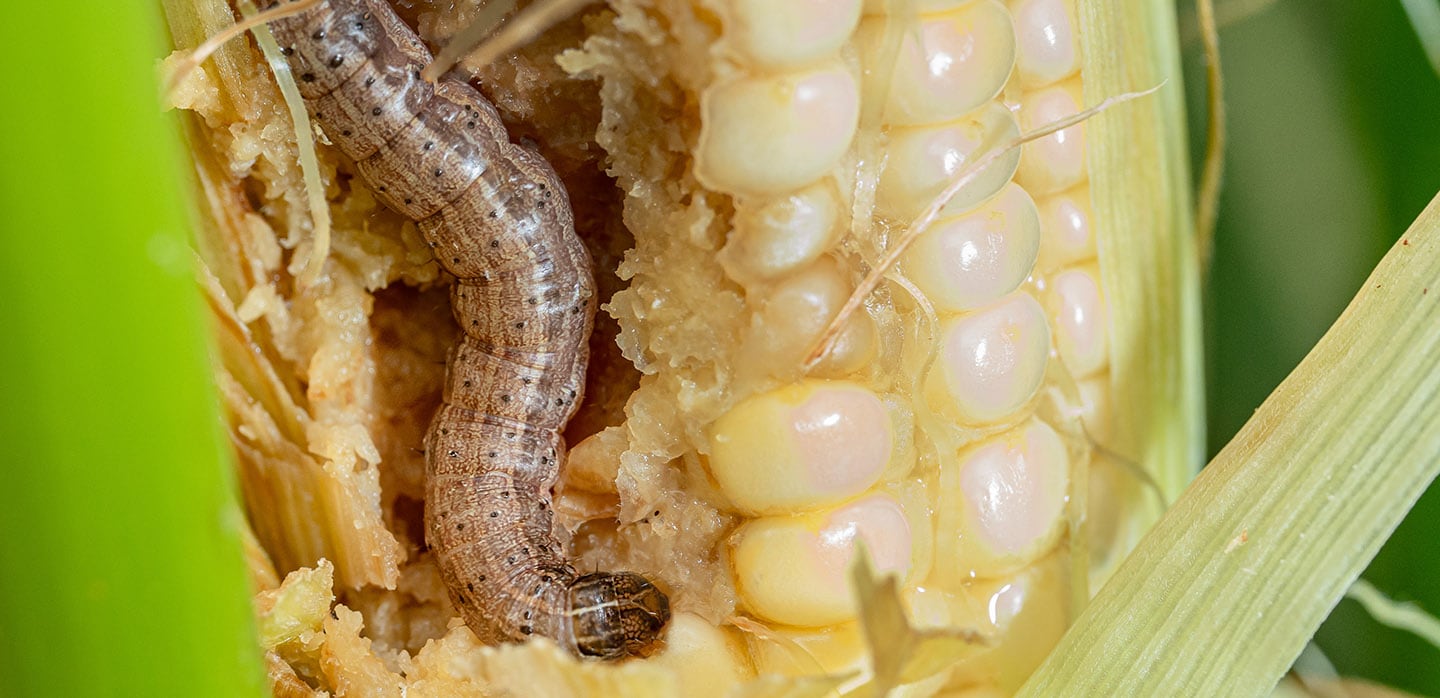The Fall Armyworm Lends a Bitter Note To The Farmer's Journey
Shivaram of Andhrapradesh has been growing maize for decades and acquired ample returns from the crop but, fall armyworm, a devastating pest in recent times has started destroying the crop which is the main source of income to the farmer and left him in distress. Here is the annoying experience of a farmer with fall armyworm.
He adds fall armyworm has been attacking the crop for two years and i harvested almost nothing because the pest has attacked more than 80% of the crop leaving very less yields. The farmer says he did not even realize when the pest had attacked the crop last year, same is the situation this year, few farmers used pesticides to resolve the issue, however not all farmers can afford to spray the quality pesticides.
Shifting to sowing different maize varieties did not have much effect on the pest, the pest moved from one plant to other and started destroying the stems and leaves, early detection of incidence may have reduced the risk of damage but it was already late. skeletonization of leaves (elongated papery windows) is the major symptom to detect the pest.
Coping up the Challenges of Weeds
Higher weeds always result in greater incidence of pest attack. Weeds fight for nutrients and space with the crops and frequently overtake the crop, so the farmer must manually remove the hardy weeds to safeguard the crop. If he is unable to remove the weeds before the crop starts, the resulting yield will be very poor.
In addition taking proper care and spraying the right pesticides at the right time would effectively have eliminated the damage caused by the pest.
ALSO READ: EFFECTIVE METHODS TO CONTROL SUCKING PESTS IN TOMATO FIELDS
As discussed earlier, the early detection of the pest is a major key in controlling Fall armyworm. The larvae start to feed on leaves by scraping the leaves in the initial stage and it is easy to control the larvae at this stage.
Know how?
It is always recommended to manage larva using biological methods, hence spraying neem oil 1500ppm @ 5ml per liter of water would be recommended, if the infestation in the field is greater than 10% where the larva starts to make large holes, it is preferable to use chemical insecticides like thiodicarb, Flubendiamide, Chlorantraniliprole and Spinosad to combat the damage.
- Thiodicarb 75% WP : Spray 0.25 ml/liter of water
- Flubendiamide 39.35% SC : Spray 0.25 ml/liter of water
- Chlorantraniliprole 18.5% SC : Spray 0.3 ml/liter of water
- Spinosad 45% SC : Spray 0.37 ml/liter of water

Fall Armyworm Pest Attack

Fall Armyworm
Other Management Strategies Which Are To Be Adopted
Crop management practices along with the systemic plant protection yield better results in controlling Fall armyworm.
- Maize hybrids with firm husk cover should be selected for cultivation, such that larva does not enter into the comb.
- Deep ploughing is always recommended which helps in exposing the pupae to sunlight thus destroying them. Field sanitization must be maintained.
- Napier grass can be used as the border crop to avoid the pest from entering into the field.
- Seeds treated with Cyantraniliprole 19.8% + Thiamethoxam 19.8% @ 4 ml per kg provided protection for up to 2-3 weeks after germination.
- Spray the crop with 5 percent NSKE or azadirachtin 1500 ppm @ 5ml/l at weekly intervals if staggered sowing is unavoidable in baby corn and sweet corn cultivation.
- Install 15 Fall armyworm pheromone traps per acre on or before the crop's germination to monitor pest arrival and population growth.
- As soon as the sowing is finished, erect bird perches at the rate of 10 per acre.
- Weekly scouting should be followed, and symptom-based control measures should be implemented.
- Handpick egg masses and neonate larvae while scouting and kill them by smashing or immersing them in kerosene water.
ALSO READ: ONION GROWTH AND PRODUCTION TECHNIQUES FOR INCREASED YIELD PER ACRE
For more information on crop advisory and crop protection of various crops download Jai Ho Kisan Mobile App. Jai Ho Kisan is envisioned to do farmer service thus providing crop advisory, Daily market rates, information on various schemes and loans and many more.